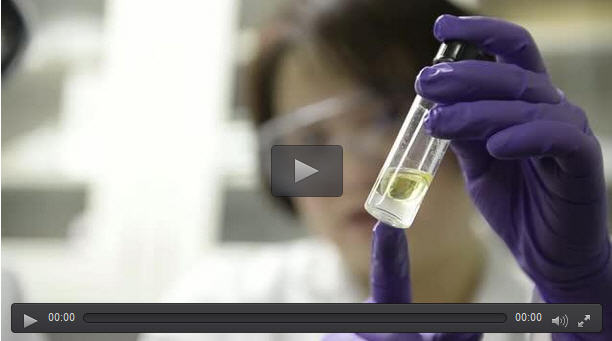Shaking the nanomaterials out

Nano implies small -- and that's great for use in medical devices, beauty products and smartphones -- but it's also a problem. All these tiny particles get into our water and are difficult to remove. Now, researchers Yoke Khin Yap and Dongyang Zhang have a novel and very simple way to take the nanomaterials out. Credit: Michigan Tech, Sarah Bird
Purifying water and greening nanotechnology could be as simple as shaking a vial of water and oil. At least that's the case for a new method to clean contaminated water full of unwanted nanomaterials.
Nano implies small–and that's great for use in medical devices, beauty products and smartphones–but it's also a problem.
The tiny nanoparticles, nanowires, nanotubes and other nanomaterials that make up our technology eventually find their way into water.
The Environmental Protection Agency says more 1,300 commercial products use some kind of nanomaterial. And we just don't know the full impact on health and the environment.
“These materials are very, very tiny and that means if you try to remove them and clean them out of contaminated water, that it's quite difficult,” says Dongyan Zhang, a research scientist at Michigan Technological University. She adds that techniques like filter paper or meshes often don't work.
Instead, shaking up oil and water traps the nanomaterials, which can be easily removed. The process clears out nearly 100 percent of nanowires, nanosheets, nanotubes and other one- and two-dimensional nanomaterials. Only zero-dimensional nanospheres are still too small to grab.
The study came out recently in the American Chemical Society's journal Applied Materials and Interfaces.
Media Contact
All latest news from the category: Life Sciences and Chemistry
Articles and reports from the Life Sciences and chemistry area deal with applied and basic research into modern biology, chemistry and human medicine.
Valuable information can be found on a range of life sciences fields including bacteriology, biochemistry, bionics, bioinformatics, biophysics, biotechnology, genetics, geobotany, human biology, marine biology, microbiology, molecular biology, cellular biology, zoology, bioinorganic chemistry, microchemistry and environmental chemistry.
Newest articles

Sea slugs inspire highly stretchable biomedical sensor
USC Viterbi School of Engineering researcher Hangbo Zhao presents findings on highly stretchable and customizable microneedles for application in fields including neuroscience, tissue engineering, and wearable bioelectronics. The revolution in…

Twisting and binding matter waves with photons in a cavity
Precisely measuring the energy states of individual atoms has been a historical challenge for physicists due to atomic recoil. When an atom interacts with a photon, the atom “recoils” in…

Nanotubes, nanoparticles, and antibodies detect tiny amounts of fentanyl
New sensor is six orders of magnitude more sensitive than the next best thing. A research team at Pitt led by Alexander Star, a chemistry professor in the Kenneth P. Dietrich…





















